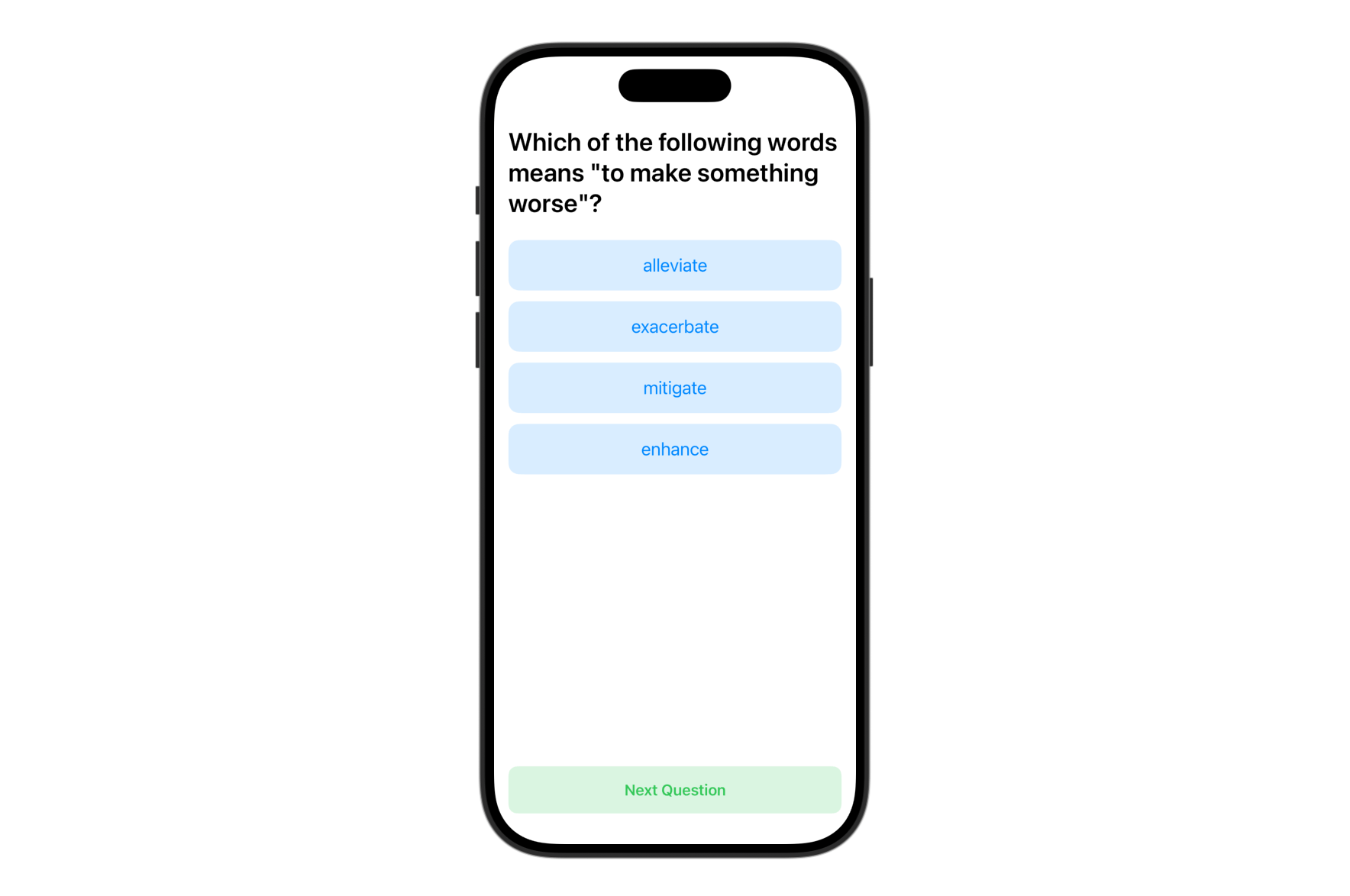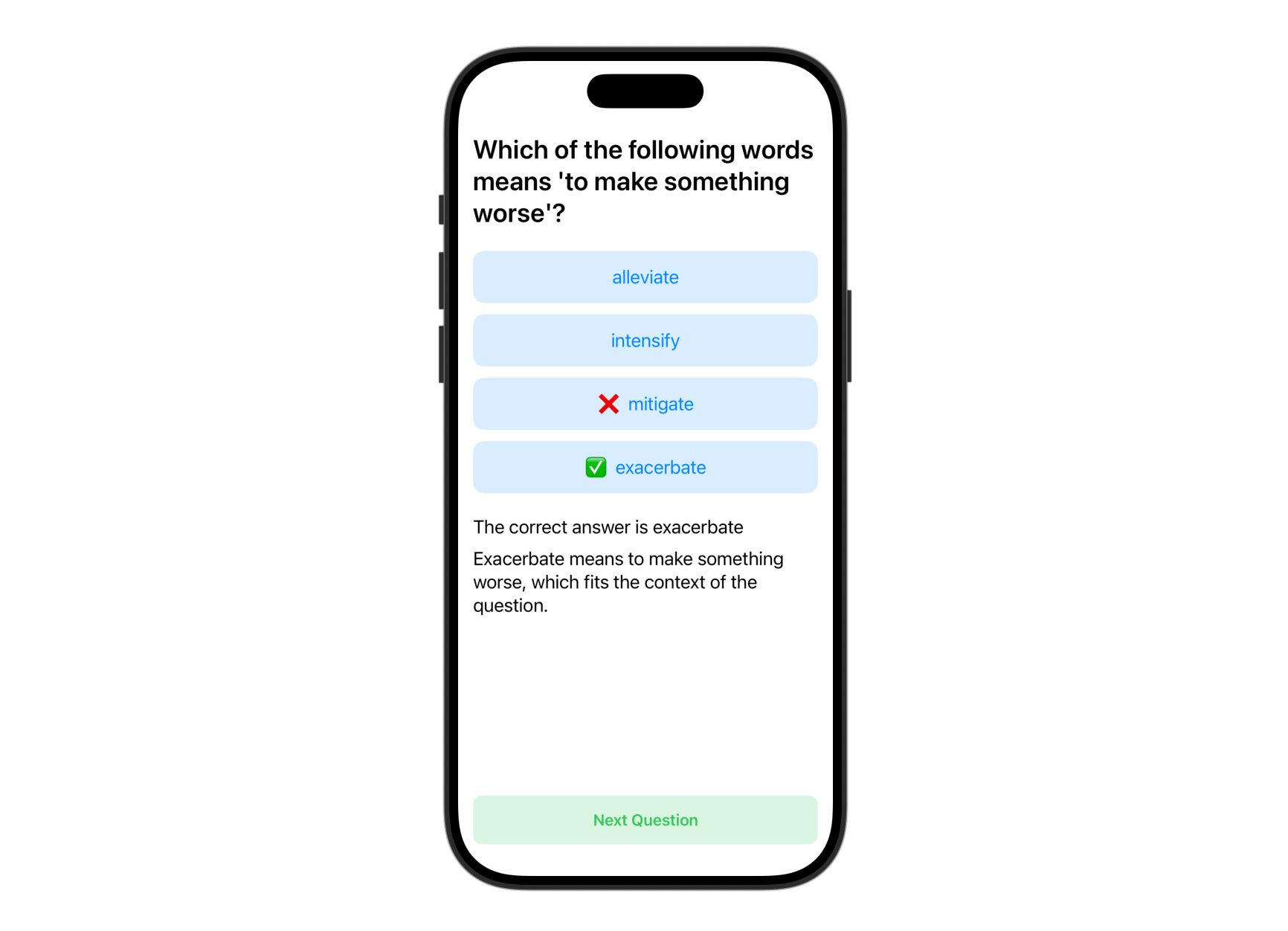Within the earlier tutorial, we launched the Basis Fashions framework and demonstrated methods to use it for primary content material era. That course of was pretty easy — you present a immediate, wait a number of seconds, and obtain a response in pure language. In our instance, we constructed a easy Q&A app the place customers might ask any query, and the app displayed the generated textual content instantly.
However what if the response is extra complicated — and it’s good to convert the unstructured textual content right into a structured object?
For instance, suppose you ask the mannequin to generate a recipe, and also you wish to flip that response right into a Recipe object with properties like title, elements, and directions.
Do it’s good to manually parse the textual content and map every half to your knowledge mannequin?
The Basis Fashions framework in iOS 26 gives two highly effective new macros referred to as Generable and @Information to assist builders simplify this course of.
On this tutorial, we’ll discover how these macros work and the way you should use them to generate structured knowledge instantly from mannequin output.
The Demo App

We’ll construct a easy Quiz app that demonstrates methods to use Basis Fashions to generate structured content material. On this case, it’s the vocabulary questions for English learners.
The app shows a multiple-choice query with 4 reply choices, permitting customers to check their data interactively. Every query is generated by the on-device language mannequin and routinely parsed right into a Swift struct utilizing the @Generable macro.
This demo app exhibits how builders can transfer past primary textual content era and use Basis Fashions to create structured content material.
Utilizing @Generable and @Information
Let’s get began with constructing the demo app. As stated earlier than, not like the earlier Q&A demo, this quiz app presents a multiple-choice query with a number of reply choices. To characterize the query, we’ll outline the next construction in Swift:
struct Query {
let textual content: String
let decisions: [String]
let reply: String
let clarification: String
}
Later, we are going to ask the on-device language mannequin to generate quiz questions. The problem is how we will convert the mannequin’s unstructured textual content response right into a usable Query object. Happily, the Basis Fashions framework introduces the @Generable macro to simplify the conversion course of.
To allow automated conversion, merely mark your struct with @Generable, like this:
import FoundationModels
@Generable
struct Query {
@Information(description: "The quiz query")
let textual content: String
@Information(.depend(4))
let decisions: [String]
let reply: String
@Information(description: "A short clarification of why the reply is right.")
let clarification: String
}
The framework additionally introduces the @Information macro, which permits builders to supply particular directions to the language mannequin when producing properties. As an illustration, to specify that every query ought to have precisely 4 decisions, you should use @Information(.depend(4)) on the decisions array property.
With array, aside from controlling the precise variety of ingredient, you may as well use the next guides:
.minimumCount(3)
.maximumCount(100)
It’s also possible to add a descriptive clarification to a property to provide the language mannequin extra context in regards to the sort of knowledge it ought to generate. This helps make sure the output is extra correct and aligned together with your expectations.
It’s necessary to concentrate to the order through which properties are declared. When utilizing a Generable kind, the language mannequin generates values sequentially primarily based on the order of the properties in your code. This turns into particularly necessary when one property’s worth depends on one other. For instance, within the code above, the clarification property will depend on the reply, so it must be declared after the reply to make sure it references the proper context.
Constructing the Quiz App
With the Query construction prepared, we dive into the implementation of the Quiz app. Change again to ContentView and replace the code like this:
import FoundationModels
struct ContentView: View {
@State non-public var session = LanguageModelSession(directions: "You're a highschool English instructor.")
@State non-public var query: Query?
var physique: some View {
VStack(spacing: 20) {
if let query {
QuestionView(query: query)
} else {
ProgressView("Producing questions ...")
}
Spacer()
Button("Subsequent Query") {
Job {
do {
query = nil
query = attempt await generateQuestion()
} catch {
print(error)
}
}
}
.padding()
.body(maxWidth: .infinity)
.background(Coloration.inexperienced.opacity(0.18))
.foregroundStyle(.inexperienced)
.font(.headline)
.cornerRadius(10)
}
.padding(.horizontal)
.activity {
do {
query = attempt await generateQuestion()
} catch {
print(error)
}
}
}
func generateQuestion() async throws -> Query {
let response = attempt await session.reply(to: "Create a vocabulary quiz for highschool college students. Generate one multiple-choice query that checks vocabulary data.", producing: Query.self)
return response.content material
}
}
The person interface code for this app is straightforward and simple to observe. What’s value highlighting, nevertheless, is how we combine the Basis Fashions framework to generate quiz questions. Within the instance above, we create a LanguageModelSession and supply it with a transparent instruction, asking the language mannequin to tackle the function of an English instructor.
To generate a query, we use the session’s reply methodology and specify the anticipated response kind utilizing the producingparameter. The session then routinely produces a response and maps the outcome right into a Query object, saving you from having to parse and construction the information manually.
Subsequent, we’ll implement the QuestionView, which is accountable for displaying the generated quiz query, dealing with person interplay, and verifying the chosen reply. Add the next view definition inside your ContentView file:
struct QuestionView: View {
let query: Query
@State non-public var selectedAnswer: String? = nil
@State non-public var didAnswer: Bool = false
var physique: some View {
ScrollView {
VStack(alignment: .main) {
Textual content(query.textual content)
.font(.title)
.fontWeight(.semibold)
.padding(.vertical)
VStack(spacing: 12) {
ForEach(query.decisions, id: .self) { selection in
Button {
if !didAnswer {
selectedAnswer = selection
didAnswer = true
}
} label: {
if !didAnswer {
Textual content(selection)
} else {
HStack {
if selection == query.reply {
Textual content("✅")
} else if selectedAnswer == selection {
Textual content("❌")
}
Textual content(selection)
}
}
}
.disabled(didAnswer)
.padding()
.body(maxWidth: .infinity)
.background(
Coloration.blue.opacity(0.15)
)
.foregroundStyle(.blue)
.font(.title3)
.cornerRadius(12)
}
}
if didAnswer {
VStack(alignment: .main, spacing: 10) {
Textual content("The proper reply is (query.reply)")
Textual content(query.clarification)
}
.font(.title3)
.padding(.prime)
}
}
}
}
}
This view presents the query textual content on the prime, adopted by 4 reply decisions rendered as tappable buttons. When the person selects a solution, the view checks if it’s right and shows visible suggestions utilizing emojis (✅ or ❌). As soon as answered, the proper reply and an evidence are proven under. The @State properties observe the chosen reply and whether or not the query has been answered, permitting the UI to replace reactively.
As soon as you have carried out all the mandatory adjustments, you possibly can take a look at the app within the Preview canvas. It is best to see a generated vocabulary query just like the one proven under, full with 4 reply decisions. After deciding on a solution, the app gives rapid visible suggestions and an evidence.

Abstract
On this tutorial, we explored methods to use the Basis Fashions framework in iOS 26 to generate structured content material with Swift. By constructing a easy vocabulary quiz app, we demonstrated how the brand new @Generable and @Information macros can flip unstructured language mannequin responses into typed Swift structs.
Keep tuned — within the subsequent tutorial, we’ll dive into one other highly effective function of the Basis Fashions framework.

